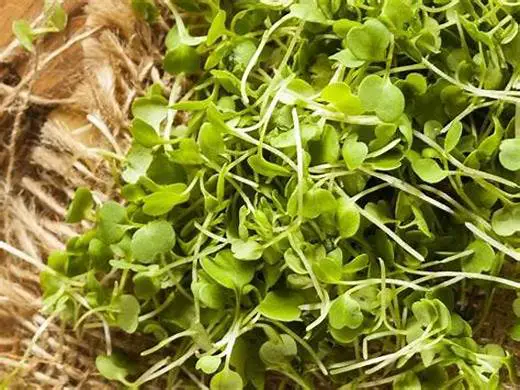Perhaps you have wondered whether microgreens grow again after being cut. Since most greens are ready within 2-3 weeks, indoors in a tray, and they require very little maintenance, growing a batch of microgreens is a rewarding and easy task. When you get the hang of it you can start growing your food with a variety of microgreens in a small space no bigger than your dining table. The fact that they are packed with health benefits with higher levels of vitamins and tasty is just a bonus!
In contrast to sprouts, microgreens and even shoots are culled rather than harvested; so the question remains whether various types of microgreens can continue to grow after cutting. By harvesting microgreens, the plant roots are simply cut above the medium above the soil level, allowing the soil for microgreens to not reach the plant. The seeds have already started to germinate.
Microgreens: A Definition
It is important to know the difference between microgreens, sprouts, and shoots. These are all miniature plants, but microgreens are the ones that take the longest to grow. Once germinated seeds have developed tiny roots and at least their first true leaves, microgreens can be harvested. The sprouts can be fully edible in less than a week, whereas the shoots are edible in 1-2 weeks.
Furthermore, sprouts are sown, so there is nothing left to re-grow with each harvest. A batch of microgreens and shoots can be harvested the same way and they also have a regrowth potential. Make sure you harvest them just above the lowest leaf to increase their chances of regrowth or cell regeneration after they’ve been harvested.
They are an excellent way to get more nutrients if you prefer young and tender shoots to mature vegetables or herbs!
Regrowth of Microgreens
 The good news is that, in some cases, microgreens can re-grow. You might be able to get more than one crop from the same seeds. After the plants stop growing, you can add the contents of your grow tray to your compost pile; it will be great food for your plants.
The good news is that, in some cases, microgreens can re-grow. You might be able to get more than one crop from the same seeds. After the plants stop growing, you can add the contents of your grow tray to your compost pile; it will be great food for your plants.
You must continue to care for the seeds, just as you have done with your first harvest. Microgreens need an indirect light source, a temperature of approximately 60°-70°F, and frequent watering to stay healthy. If you don’t have enough sun in your home to grow microgreens, investing in grow lights might be beneficial.
Ideally, water them from the side or keep a tray of water below the growing media. Keep in mind that mold thrives in moist environments, so don’t water microgreens too much. You should increase air circulation around the microgreens to reduce the chances of mold or disease coming on a layer of soil or plants. You don’t need to remove the seeds or go through the germination process, the shoots you’ve cut will simply grow back and be just be packed with nutrients like the ones you just ate.
Extra Tip: You will have to leave some shoots or some healthy leaves; germination is much slower due to stunted growth and the taste aspect of microgreens is usually altered.
Which Microgreens Are Best to Re-Grow?
The fact that some varieties of microgreens have better chances of regrowth in larger pots is particularly true. This is evidenced by their strong roots. Because of this, a larger pot allows for better regrowth. Don’t forget the plants are very young when you take your first harvest, some may not survive the shock of losing all their growth so quickly.
A lot of beans and pea shoots can re-grow, including snow peas, green peas, snap pea, and even fava beans. It is also possible to re-grow some salad greens such as cabbage microgreens; as long as there is at least a few inches tall of stem still attached when you cut them.
The answer to the question “does your favorite microgreens grow when cut” may depend on whether it’s worth the effort or not; you may find it easier and more effective to just plant new seeds.

